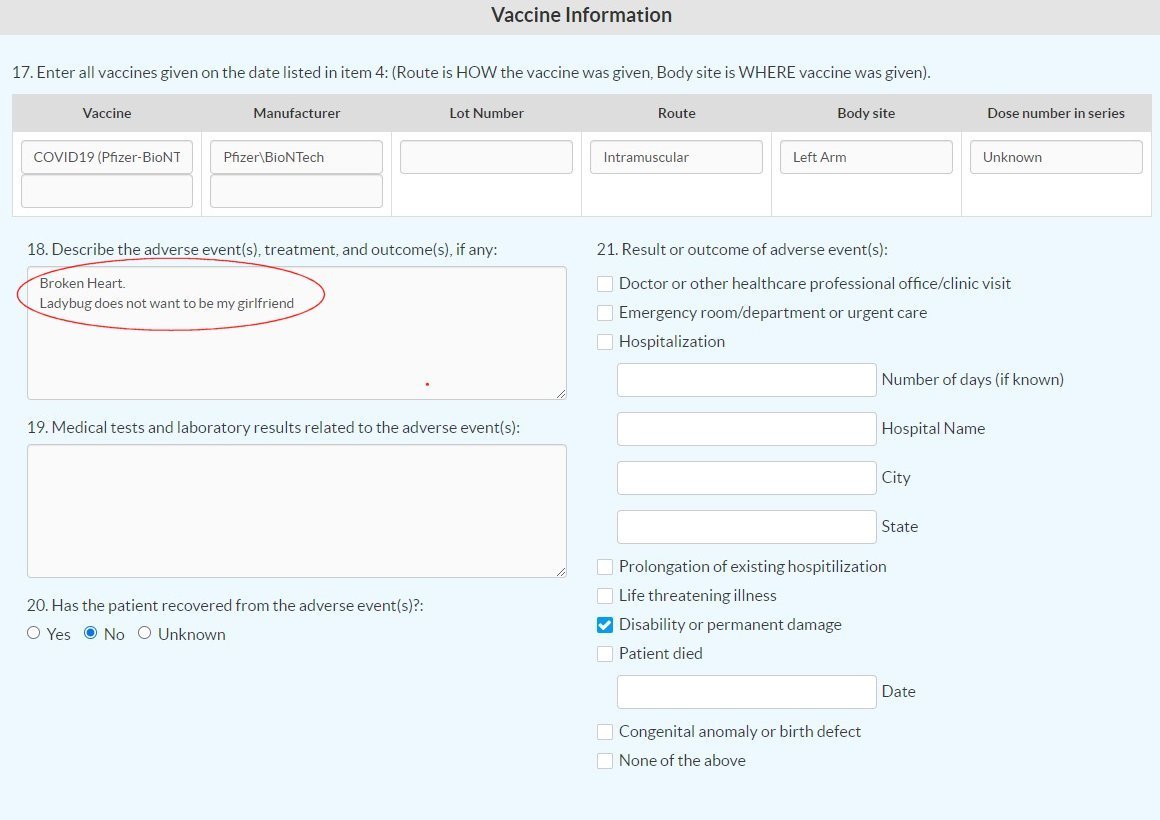[Initialement en date du 12 sept. 2021]
Donc voici donc Fifi-Pipo qui partage encore un article sans vérifier.
The Guardian « expliquerait » que les 12-15 ans ont plus de risque d’être hospitalisé suite vaccin que suite Covid.
Vraiment ? Ca mérite un #debunk rapide.
⬇️
https://twitter.com/f_philippot/status/1436941673280557059

 Florian Philippot
Florian Philippot@f_philippotVu que cette étude américaine montre que les garçons de 12 à 15 ans ont 4 à 6 fois plus de chance d’être hospitalisés suite au vaccin que du covid, pourquoi la France n’a-t-elle pas déjà suspendu leur vaccination ?! Ils attendent les procès dans 10 ans ?
Précisons que ce risque concernerait (encore) cette histoire de myocardite.
La myocardite est une inflammation du muscle cardiaque. En général d’évolution favorable et peu grave.
Et ce risque existe avec le Covid !
⬇️
Voici donc l’article de The Guardian :
Que dit-il vraiment ?
⬇️
D’abord il commence par rapporter qu’en effet, l’analyse fait par les auteurs de l’étude SUGGERE que le risque pour les 12-15 serait assez élevé.
« Suggère ». Une précaution oratoire dont n’a que faire Philippot, qui transforme ça en affirmation.
⬇️

Mais ensuite, l’article indique que ces données ne correspondent pas à ce qui est observé en UK, dont le risque serait de 6 par million (et non jusqu’à 162 comme dans l’article)
Là encore Fifi n’en n’a que faire… Si ça c’est pas du cherry-picking ! 🍒
⬇️

Pourquoi cet écart ? Les données ne sont pas enregistrées de la même façon en UK et aux US. C’est quoi cette histoire d’enregistrement ?
Hé bien faisons ce qu’il faut faire pour vérifier les faits: ALLER VOIR L’ETUDE
Elle est là :
Que voit-on ?
⬇️
D’abord on peut y lire en tout premier un avertissement: cette étude est en PREPRINT, c’est à dire qu’elle n’a pas été encore revue/relue/vérifiée par d’autres.
Donc comme précisé, l’article NE DEVRAIT PAS être utilisée pour en tirer des conclusion pour des décisions
⬇️

[PARENTHESE / EDIT / NOTE]
Ce thread date initialement du 12 septembre 2021. Depuis, l’étude a été publiée (en date du 14 février 2022, ici : On y reviendra donc si j’ai le temps dans un autre thread
[FIN DE LA PARENTHESE]
Ensuite on peut voir que cette étude a consister à analyser les données de la base VAERS. Cette base de donnée recense les évènements qui font suite à la prise d’un médicament (comme un vaccin par exemple).
« Dis nous Chat Noir, c’est quoi alors le problème ? »
J’y viens.
⬇️

Le problème, c’est déjà que ce genre de donnée enregistre des EVENEMENTS. Pas des effets indésirables. Juste des événements. Par ex. se faire renverser par un bus. Ou la mort de son chat. Ces événements sont ENSUITE analysés pour savoir si oui ou non ils sont liés au vaccin.
⬇️
« Mais Chat Noir, les auteurs précisent bien qu’ils n’ont été cherchés que les événéments médicaux ! »
Oui mais…
⬇️

L’autre principal problème, c’est que la base VAERS est AUTO-DECLARATIVE.
Ca veut dire que n’importe qui peut déclarer n’importe quoi. Y compris sur son identité.
Et quand je dis n’importe quoi, c’est vraiment n’importe quoi.
J’ai fait l’essai moi-même.
⬇️


Évidemment, Monsieur « Chat Noir MIRACULOUS » qui déclare que depuis le vaccin, il a le cœur brisé que sa ladybug lui fout des râteaux, c’est pas un effet du vaccin… C’est juste que je suis trop CHA-rmant pour la demoiselle et que ça lui fait peur un aussi beau gosse ?
⬇️

Alors en temps normal, quand les gens sont sérieux, ça ne pose pas vraiment de soucis.
Sauf que là… La base VAERS est prise d’assaut par les antivax !
⬇️
Donc une étude qui analyse ce genre de base de données pour étudier les effets secondaires, alors même qu’on ne sait pas si ces déclarations sont fiables, bah ça fait un énorme biais.
Notons qu’en Europe, on a la même chose : c’est la base Eudravigilance.
Mais même problème
⬇️
Bref, si on vous dit « il y a des morts/malades/hospitalisés à cause du vaccin, je l’ai vu sur VAERS ou Eudravigilance », méfiez-vous.
Expliquez qu’il faut attendre une analyse des données de ces bases prises d’assaut par les antivax qui font grossir les chiffres…
Votre Chaton

You can read the unrolled version of this thread here:


